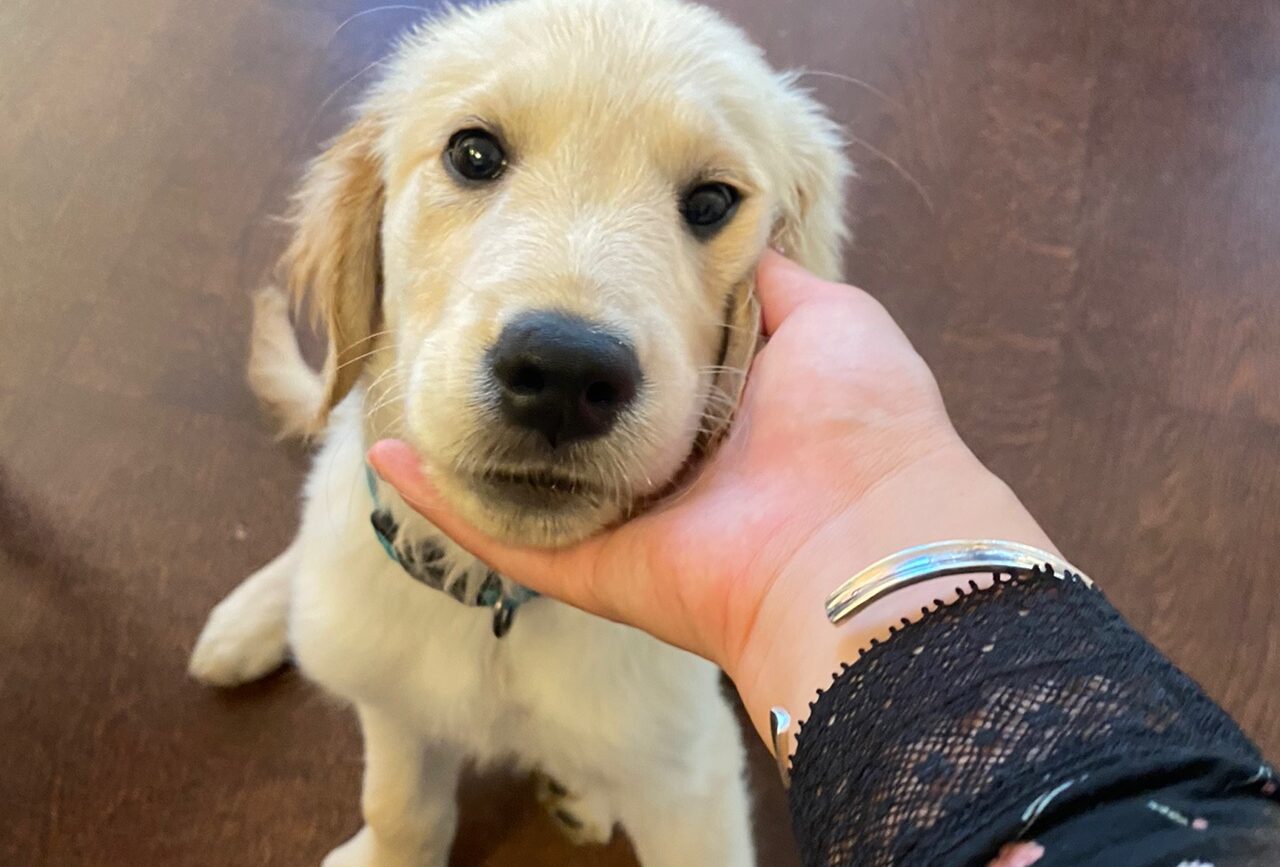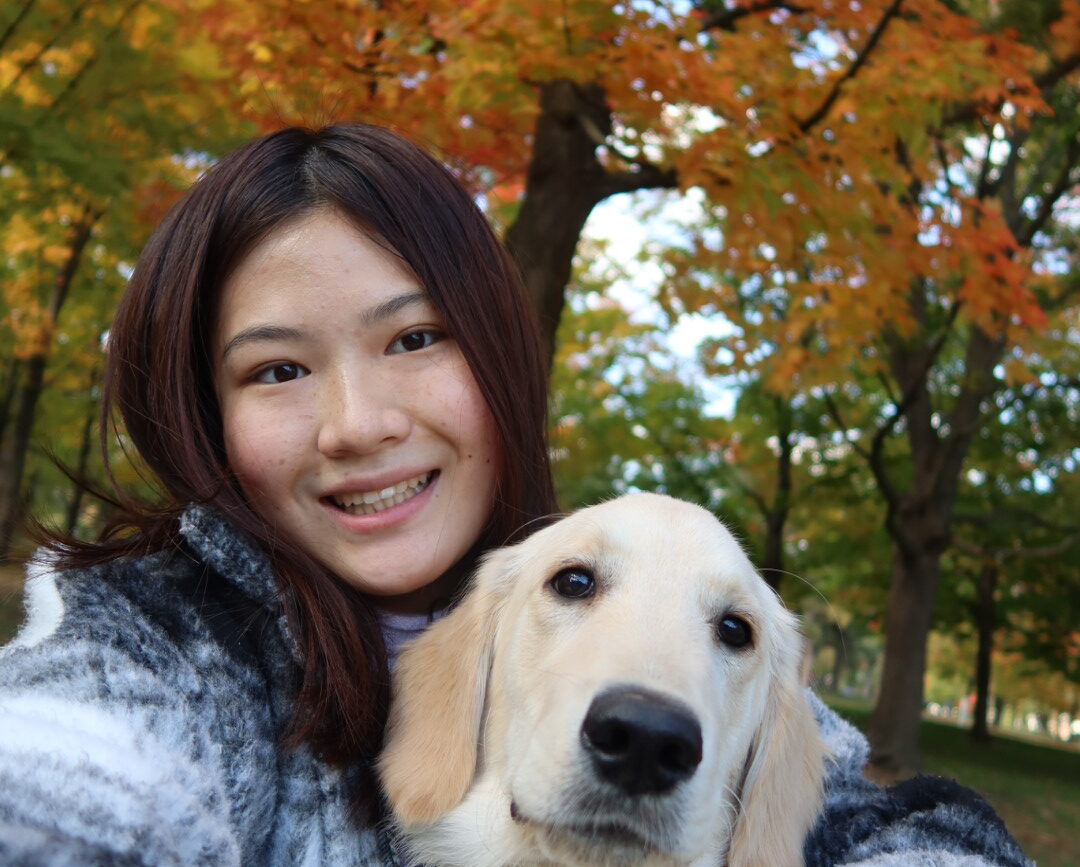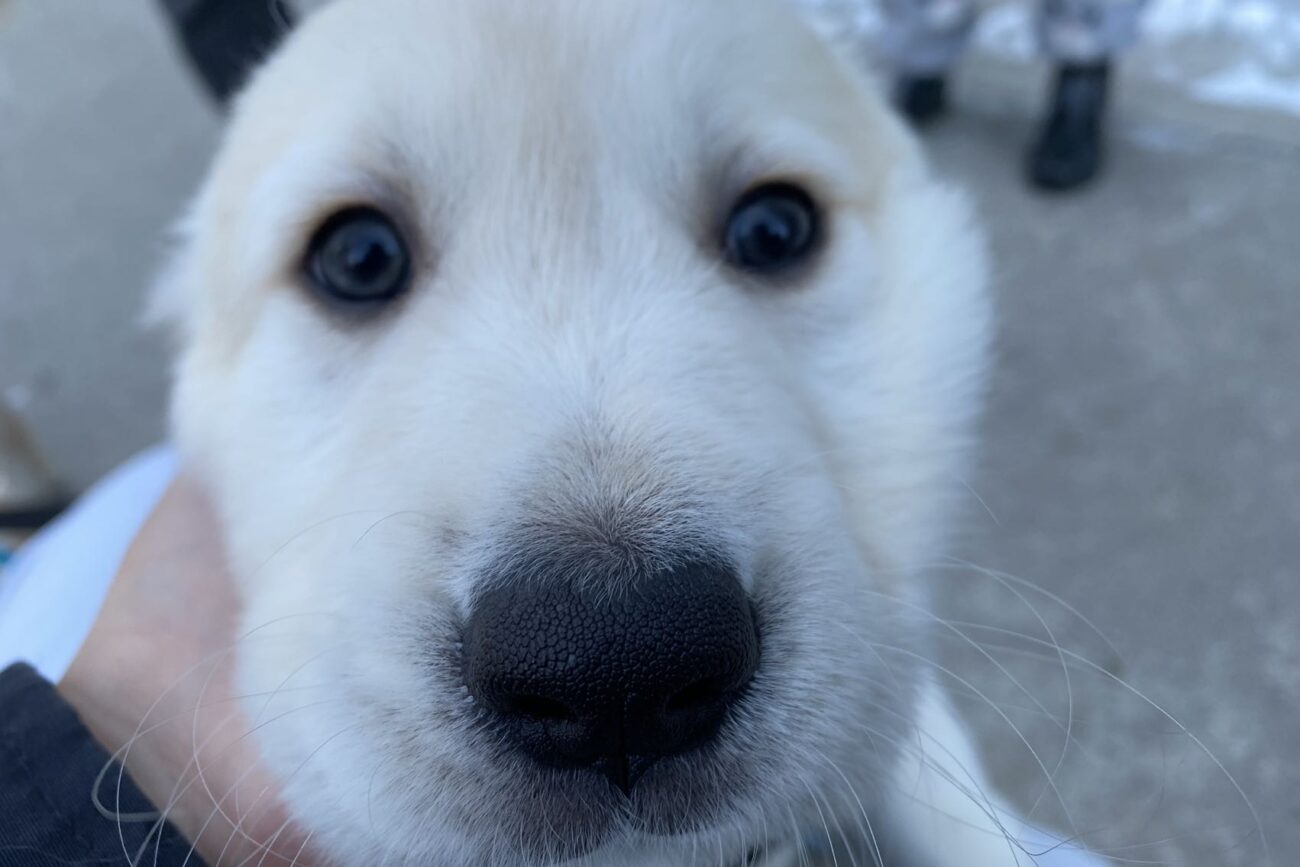By Yutang Song
Puppies are adorable, but they can also destroy your home. They have common behaviours: they bite, don’t want to share their food and toys, and jump when they’re not supposed to. For example, puppies will tear at your personal belongings, such as wires and soft clothing, to release their anxiety about their new home. However, there are things you can do to help with their transition into your home. We’ll explore how to deal with these behaviours individually to help you understand puppy behaviour. Believe me, reading this story will give you a better idea of how to handle your puppies.
Before you get home with your puppy, there are a few things you have to keep in mind: puppies have just left their mother and siblings, and they need time to familiarize themselves with the new environment. New owners should immediately work on puppy socialization and problem prevention.
Ricky Crilly is the owner of a 4-month-old bloodhound in Toronto. When he brought his puppy home, he found everything his puppy did was not as cute as his appearance. “He was literally chewing up my shoes everywhere around my home. You can’t leave anything off the ground,” he said.
According to Stanley Coren, a University of British Columbia psychologist, dogs are trained to respond to human gestures but puppies are born with the ability to recognize human gestures. You can teach your puppy with both verbal and gestured signals. If you teach your dog to lie down, accompanied by a downward hand movement in front of its face, your dog will follow your gestures and learn from your teaching. Such communication between humans and dogs is called “bimodal,” with “modal” referring to hearing and vision sensory modalities. If you want to teach your dog something, you must ensure they understand by verbal command and a hand signal.
Coren also found that socialization is an active process and owners need to provide their puppies with enough diverse experiences as soon as vaccinations finish. Socialization and exposure encourages puppies to be resilient and curious about the world around them. This socialization will help your puppy understand that the world is safe.
Dogs have a special role in their owners’ lives, and human-canine bonds are like nothing else. Do not underestimate dogs’ intelligence. Coren said dogs have the intelligence equal to a two- or three-year-old human.
Puppies are like children who need you to take care of them and prepare everything they need.
Here is a checklist from the American Kennel Club (AKC) for you to review before you bring home a new puppy:
After your puppy gets home, introduce your puppy to their crate. Admit Smith, a Komondor dog owner, said that puppies are vulnerable and need time to adapt to their new home: “My dog was so scared at the first night in his crate and whining all the time,” he said. “Don’t worry, it will be better after three days, try to ignore their whining.”
The AKC says that puppies whine because they want to get your attention. Once they see your worried face, they will whine more loudly so that you will release them from the crate. The AKC recommends not keeping puppies in a crate for more than two hours. It is best to start at five minutes and add five minutes at a time for each crate training session.
You should introduce your dog to the crate and start training them as soon as you bring them home. Jonathan Zacharias, a dog trainer based in the United States and Toronto, said that crate training is a way for dogs to have their own relaxing, safe space. “Don’t let them feel stressed about their space, try to let them treat their crate as their place,” he said. Crate-training puppies is also a great way of protecting your belongings from their curious and often destructive behaviors.
Potty training is essential for puppies. Since puppies aren’t in control of their urinary and bowel functions, preparing pee pads and proper training offers a temporary solution for their housetraining. Pee pads are moisture-absorbing pads that help with dog’s potty training. The AKC suggests that dog owners should have a consistent schedule of hours outside for their pups, controlling the dog’s diet, and providing regular exercise—it helps with your puppy learns to “go” outside.
Your puppy will find its favorite spot in the house for the bathroom. This may be its crate, bed, or under the dining table, but wherever it is, this spot makes them feel secure and comfortable. “Accidents happened a lot when they first get home, but try to take them outside as much as you can to set up their routine,” said Zacharias.
If you haven’t done so already, make an appointment with your veterinarian for a full physical examination, vaccinations, and a fecal analysis for your puppy. “Dogs that haven’t gotten a full vaccination are more likely to be vulnerable to diseases such as rabies, lepto, and kennel cough,” said Zacharias.
Most people may not have a sense of how expensive it is to get their puppy for vet visits. According to RatesDotCA, an average visit cost can be anywhere from $50 to $400, surgery could cost up to $500 to $7,000.
Some new puppy owners think about whether to get insurance, Zacharias says the answer is yes. “The cost benefit analysis of pet insurance comes down to can you make the emergency surgery payment. If you can’t, like I can’t, I recommend pet insurance,” he said. “People have pet insurance and you know should something happen I feel safe knowing that she’s protected.”
It is best if you can go to a veterinarian for a quick vet check as soon as your puppy gets home. “Some puppies are not as healthy as you think they should be,” said Zacharias.
The AKC suggests dog owners should make sure puppy’s urine is light yellow and feces appears brown, solid but a bit squishy, in one normal log-like piece, as it can be common for puppies to get urinary tract infections and have intestinal parasites.
Naturally, puppies and dogs get into things they shouldn’t. The AKC says dogs pick up dead animals and try to eat garbage.
To reduce their destructive behaviors, Zacharias says mental stimulation is three times more effective than physical stimulation in exhausting your dog. “A tired dog is well-behaved,” he said. “You can tire them out way quicker by creating little mental games for them and putting them through actual training than by just having them run for you.”
According to research conducted by the AKC, choking hazards, such as cooked bones and pills, are dangerous to swallow. Your dog should ask for your permission before eating anything off the ground. You have to teach them when to “take it.” The goal is to develop their manners into automatic behaviour. Steps developed by the AKC can help you to teach your dog to do just that:
- Place a treat in your hand, close your hand when they go to get it. Let your dog nose, and lick your closed hand.
- As soon as your dog stops trying to get the treat from your hand, mark the moment and say “yes”!
- Then you can place the treat on your open palm; once your dog tries to get it, close your hand and wait for your dog to ignore it. If they do ignore it, you can say, “take it,” and offer the treat.
- After a few tries, your dog should know when to “take it.” You can wait for a few seconds and offer the treat.
Puppies are primed to communicate with humans from a very young age. According to a study by Emily Bray, a post-doctoral research associate at the Arizona Canine Cognition Center at the University of Arizona’s School of Anthropology, puppies are “highly skillful” at following human gestures and signals.
For Bray’s research, the team followed 160 puppies and tested the same task again in a separate group to see if their behaviour would be more like that of adult dogs. The research outcome is that dogs do better jobs as they grow up.
So, the most important things you need to know about bringing home a new puppy are to prepare the necessities like a collar, leash, enough puppy food and bring them to the vet as soon as they get home. Dogs will learn to behave better as they grow up and they will surprise you and show you their possibilities. Be prepared for your dog and the most important thing is to be patient.







